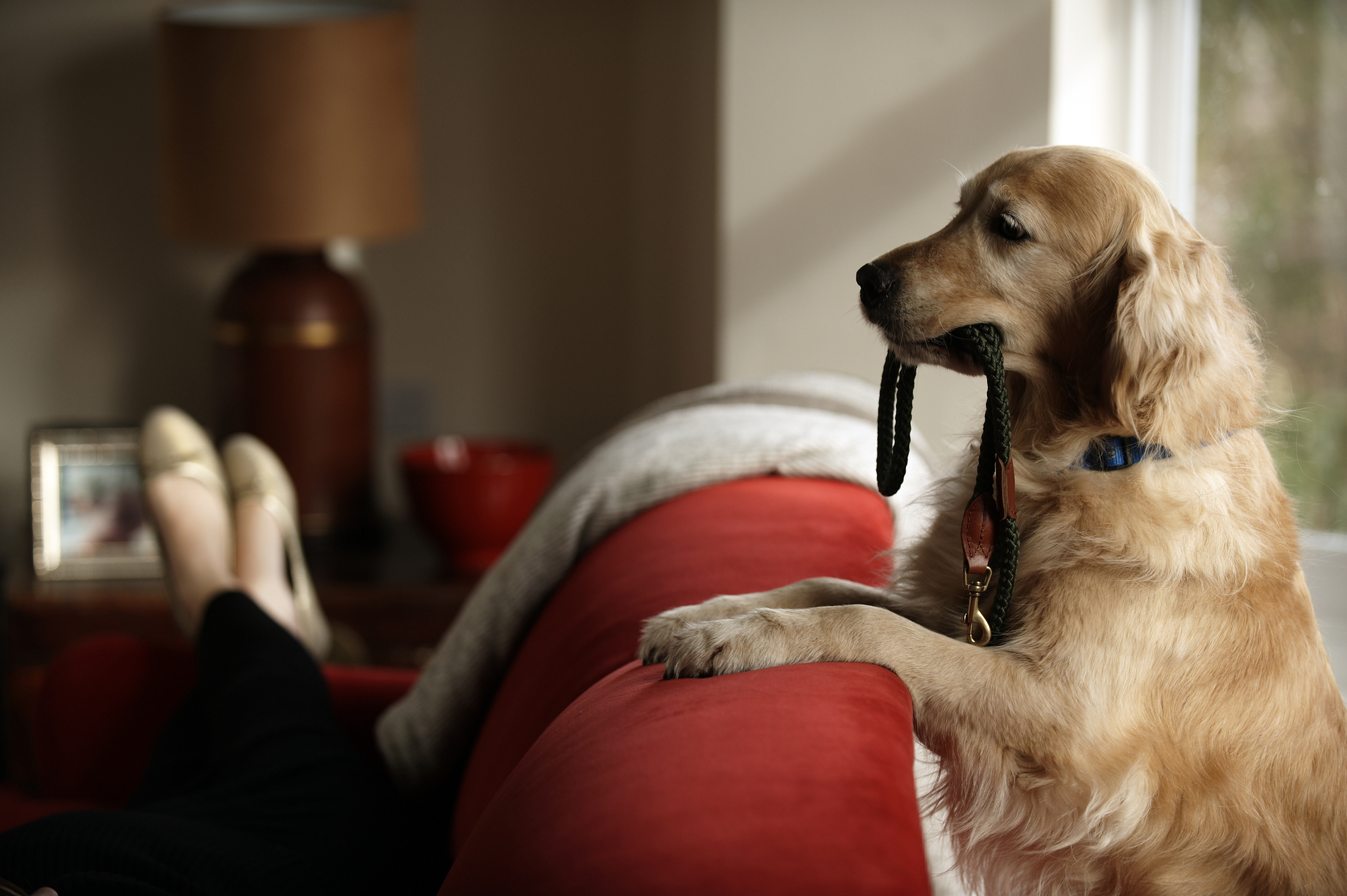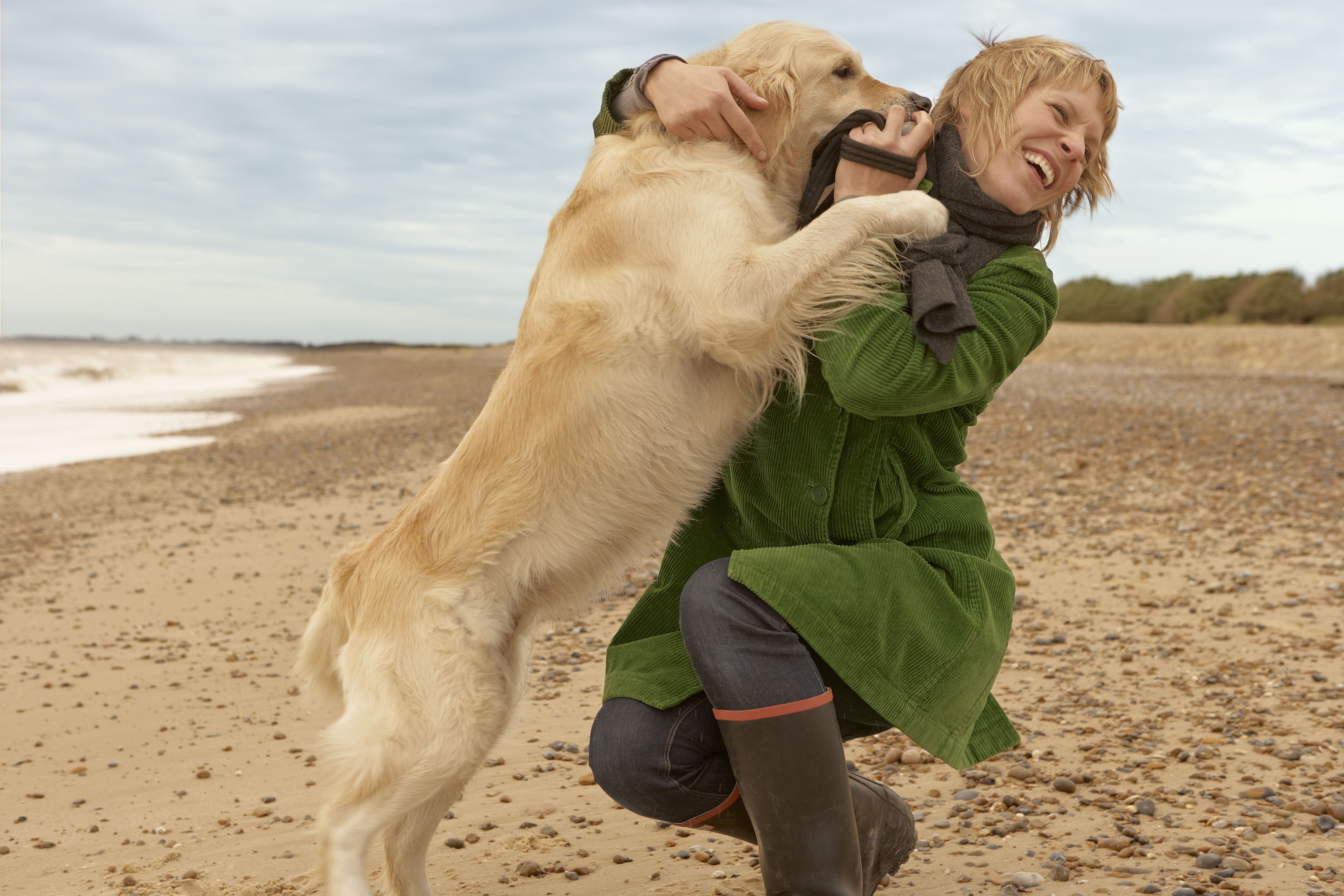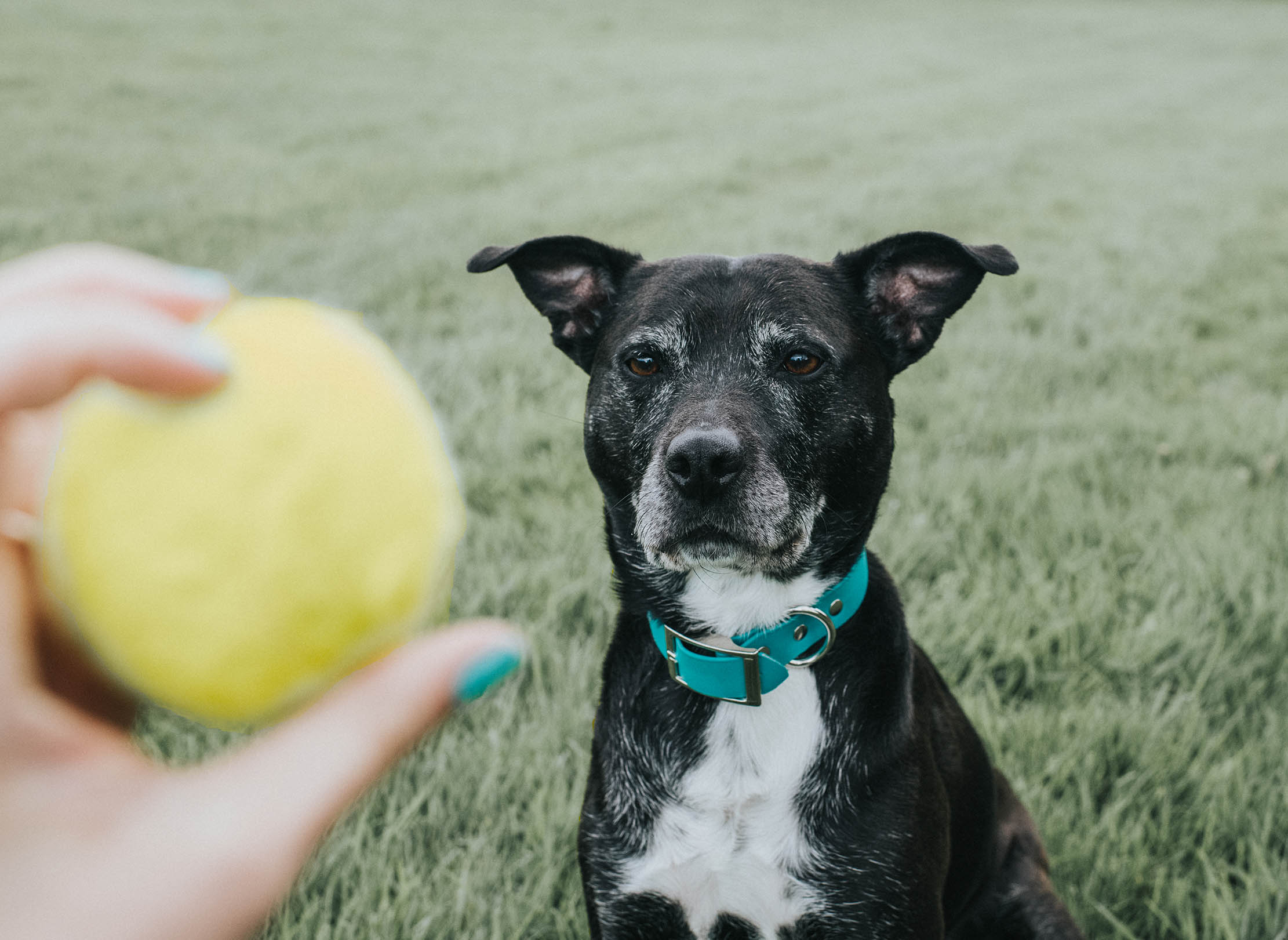Should I use a dog harness instead of a lead? Expert trainer Ben Randall shares his advice
Owning a dog that can pull you along might make you consider using a harness instead of a lead — but is that a good idea? Dog trainer Ben Randall has the answer.


As dog owners, we'll all do whatever it takes — or buy whatever we need — to keep our canine friends happy. But just because we can get something which seems like it might help doesn't necessarily mean we should. That's the starting point for this week's problem, sent in by a reader struggling to control her dog when taking it for a walk, and wondering if shopping for an alternative might help.
‘Whenever I take my young, but strong, labrador for a walk, he pulls like a train,’ writes I.B. from Somerset. ‘I’ve been recommended to use a harness, but my dog is still difficult to control. What am I doing wrong?'
For me, all dogs should understand the heel command and know that it means they need to walk along beside my left hand side, next to my left leg and knee, on or off the lead, in all environments — no matter how many distractions there are — while maintaining a focus on their handler.
My own personal view is that a harness was developed to pull a horse and cart, not to control a dog. In addition, they’re often used at the gym — especially when rugby or weight training — whereby you attach a harness to your shoulders, back and waist, to make it easier to pull a heavy object along. So why would someone recommend a harness for a dog that pulls a lot?
I’ve been perfecting my BG (Beggarbush) foundation methods for nearly 20 years — you can learn more via @beggarbush on Instagram and my dog-training app (this link will let you get a free trial) or ask me your own question by emailing paws-for-thought@futurenet.com — and know how important heel-work is.

A harness isn’t always the best answer
To be honest, I think that putting a harness on a dog that pulls when out on walks only makes matters worse and that it can make the dog stronger and even more difficult to handle. One advantage, of course, is that a harness does not pull on a dog’s neck. However, depending on the dog, it can put a huge amount of pressure on their shoulders and hips, because that’s where the force is driving the dog forward from. Quite often, a dog is pulling so hard that its front legs are hardly touching the ground; it’s all coming from rear wheel drive.
I have personally seen dogs — labradors especially — with very bad hips at an early age, and I do think that, potentially, this could be down to using a harness at an early age. If you think about it, all young dogs are on a high protein diet and their bodies are developing at a rapid rate. I’d have to question if their body is developing and growing in the right way when so much pressure is being put on the hips? Over the years, I have discussed this with many vets and they’re starting to think, like me, that this might be an issue — especially for the big breeds that really lean on a harness.

Slip leads are great, when used correctly
I like to use a slip lead, as, once you’ve taught your dog to walk to heel correctly, it sits loosely around the dog’s neck and there is very limited pressure, if any. What’s more, the dog is walking in a square, upright position, with all four legs trotting without favouring the front or back legs. So, for me, it’s a far safer way of developing the bones and muscles than the force that a harness exerts when a big dog is pulling against it.
Exquisite houses, the beauty of Nature, and how to get the most from your life, straight to your inbox.
For more detailed advice about Ben Randall’s positive, reward-based and proven BG training methods, one-to-one training sessions, residential training or five-star dog-boarding at his BGHQ in Herefordshire, telephone 01531 670960 or visit www.ledburylodgekennels.co.uk. For a free seven-day trial of the Gundog app, which costs £24.99 a month or £249.99 a year, visit www.gundog.app/trial.

Credit: Getty Images
How to get your dog to walk to heel
Teaching your dog to stop pulling on the lead takes work, but it’s an important step in training that will

How to train your dog to leave things on command, by expert dog trainer Ben Randall
Teaching a dog to stop stealing food, clothes, TV remotes or anything else that they like to pinch can feel

How to stop your dog jumping up, by expert trainer Ben Randall
It’s easy to dismiss our dogs’ love of jumping up on us — and other people — as friendly boisterousness,

How to get your dog to play fetch, by expert trainer Ben Randall
There are plenty of dogs who'll run all day playing fetch, or who'll do anything for a bit of kibble.

Credit: Getty Images/EyeEm
How to help a dog who's scared of going places in the car, by expert trainer Ben Randall
A retired greyhound with an unknown past is the subject of this week's advice article from our resident dog whisperer

Credit: Getty
How to introduce a puppy to your cat, by expert dog trainer Ben Randall
Introducing a dog to a cat can be nerve-wracking, but get it right and the two of them can get

Credit: Alamy
How to stop your puppy crying at night, by dog training expert Ben Randall
The heartbreaking whimper of a puppy calling for you will tug on the heartstrings like few other things, but you

Credit: Alamy
How to deal with a dog who won't jump in the back of the car, by top trainer Ben Randall

Credit: Alamy
How to teach your dog to go to the toilet on the lead: Three tips from top dog trainer Ben Randall
It can be frustrating and stressful when your dog is stubbornly refusing to do its business while on a lead,

Crate training a puppy: Six tips from expert dog trainer Ben Randall
Puppy crate training can be tricky, yet it can pay dividends in all sorts of ways — even making puppy toilet

Credit: Alamy Stock Photo
How to stop a dog chasing cars: Six tips from top dog-trainer Ben Randall
Watching your dog run after traffic can be heart-stoppingly scary — but it's also a difficult habit to break. Ben Randall,

How to stop your dog from barking on a walk: Five tips from top dog-trainer Ben Randall
While out on a walk, it’s not always easy to stop your dog from barking at people — and if
